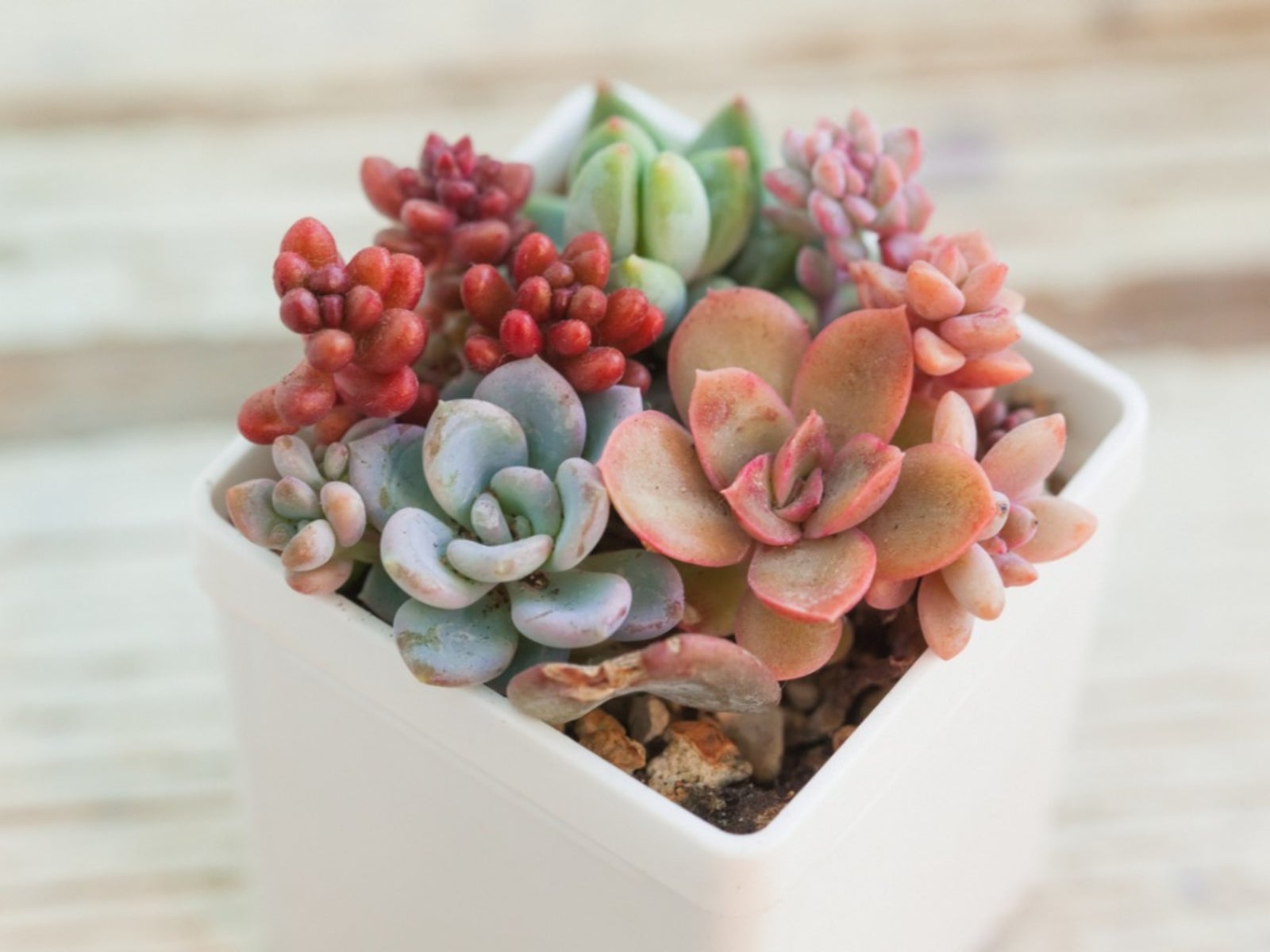Graptosedum Plant Care: How To Grow A California Sunset Succulent


The California Sunset succulent is among some of the most favorite and easy to grow of succulent plants. A hybrid cross between Graptopetalum paraguayense and Sedum adolphi, the plant is classified as a Graptosedum. Read on to learn more about this plant.
California Sunset Plant Info
Durable, grayish new leaves of this hybrid are imparted by the graptopetalum, followed by the pastel coloration. The sunset colors that eventually develop are quite similar to the sedum parent. A happy plant will produce white flowers in spring. Graptosedum ‘California Sunset’ needs sunshine to develop those unusual pinkish colors. Growing in a rosette form, this plant looks similar to an echeveria but is much tougher. Yet, it can get sunburned on the leaves. If you buy your plant from a store or greenhouse where it has not been in the sunshine, slowly acclimate it to the sun.
Graptosedum Plant Care
Graptosedum plant care is simple. Pot up your California Sunset into fast-draining succulent soil that you’ve amended with coarse sand, pumice, or perlite. Pot into moist soil, if you like. Potting into moist soil is a common practice with traditional plants, but not so much with succulents. Some professionals recommend potting succulents into dry soil and immediately watering in. Other expert sources advise no watering for a week. The reasoning is that your California Sunset succulent may have gotten a small tear or other damage in the roots during planting and may absorb water, causing rot in the plant. California Sunset, like other succulents, stores water in stems and leaves, not in the roots. Find a spot where this plant gets the appropriate amount of sun. That would ideally be a morning sun spot. If you’re acclimating the plant to full sun for the first time, start with an hour or two, depending on the season and the intensity of the light where you are. The California Sunset succulent has minimal fertilization needs. When it is growing in proper soil and sunlight, and in the right container, you’ll see growth and development during its growing season. If the plant is stretching for light, overgrowing, and getting taller, it is not getting enough sun. This plant should remain in a rosette form. Begin acclimating to more sunlight and plan a pruning episode. This is when you behead the plant to allow new rosettes to grow from the remaining stem. Use the part you’ve removed as a new planting, or more than one if it is long enough. Let the pieces callus over before planting. You may also remove some of the leaves to propagate new plants.
Gardening tips, videos, info and more delivered right to your inbox!
Sign up for the Gardening Know How newsletter today and receive a free copy of our e-book "How to Grow Delicious Tomatoes".

Becca Badgett was a regular contributor to Gardening Know How for ten years. Co-author of the book How to Grow an EMERGENCY Garden, Becca specializes in succulent and cactus gardening.
-
 8 Perfect Flowers To Plant With Tomatoes To Boost Yields & Banish Pests
8 Perfect Flowers To Plant With Tomatoes To Boost Yields & Banish PestsDon’t forget flowers when choosing companion plants for your tomato beds or pots. These pretty, fragrant blooms add beauty but are also highly beneficial.
By Mary Ellen Ellis
-
 Want The Longest Lasting Hydrangea Flowers? Grow These 8 Panicle Hydrangea Varieties
Want The Longest Lasting Hydrangea Flowers? Grow These 8 Panicle Hydrangea VarietiesFor ornamental shrubs that deliver the longest flowering seasons with plush blooms and delicate hues, these panicle hydrangea varieties are essential in your yard
By Tonya Barnett